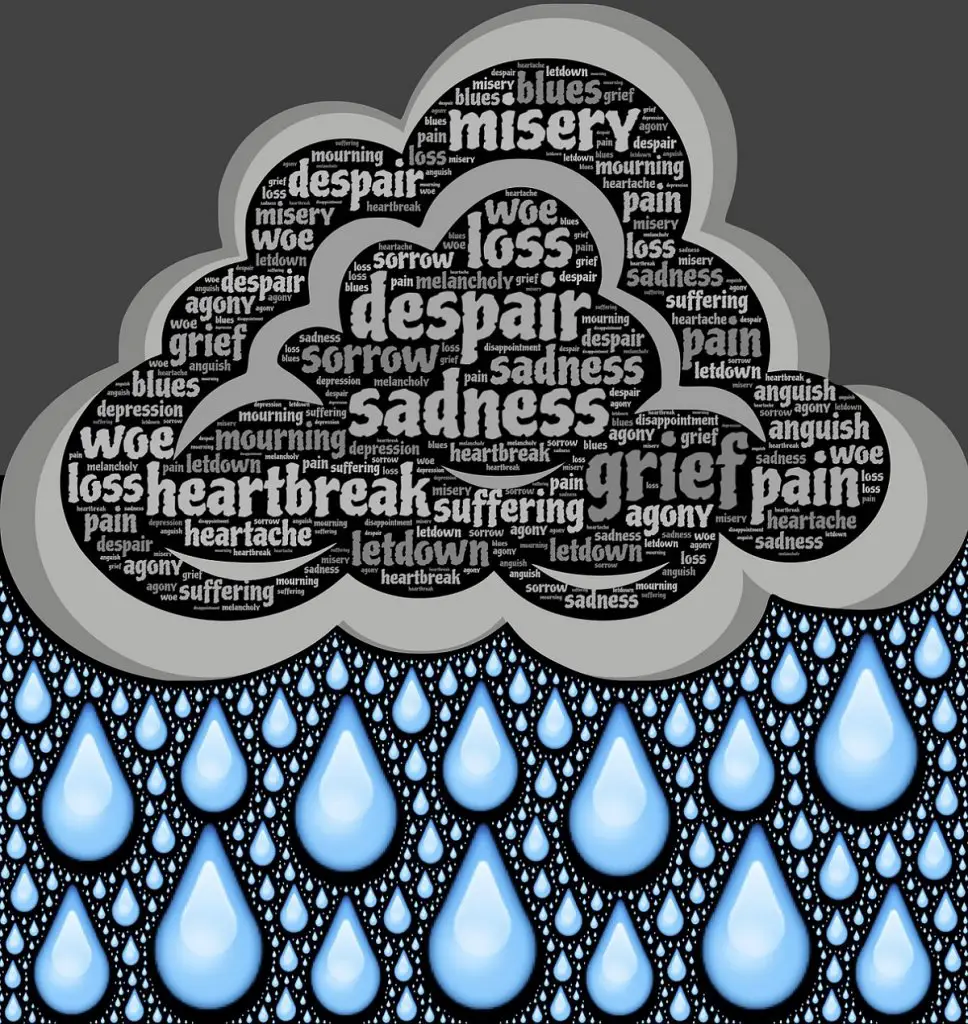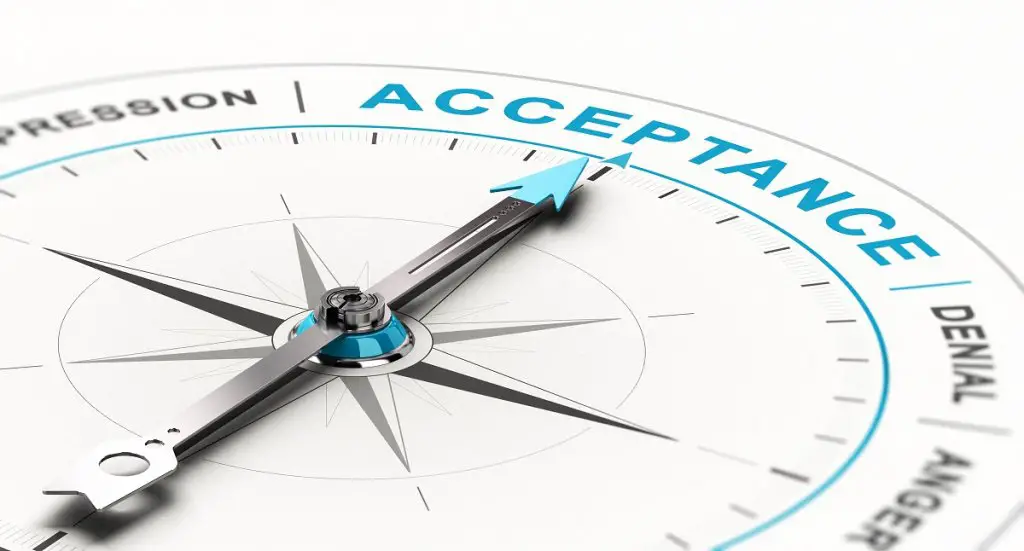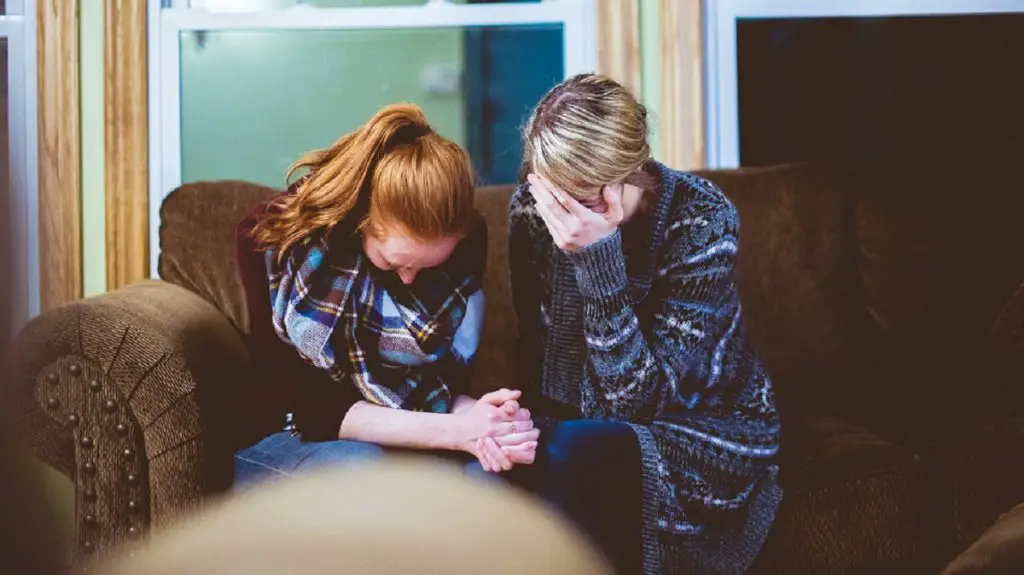Our society avoids death, has little understanding of grief, and expects the grieved to move on quickly. Grief is a process that takes longer for some people to work through. Common myths about grief can get in the way.
Anytime you lose someone you love, there are stages of grief to go through. Many researchers, mental health professionals, and clinicians have tried to identify the grieving process, but the reality is that every grieving person handles grief in his or her own time and way. While there can be similarities and advice on how to navigate grief in a healthy way, no two people grieve exactly the same.
People misunderstand and think that they will go through the “stages” in order and that life can return to normal in a certain amount of time. It just does not work that way.

Table of Contents
Stage Of Grief: 5, 7, 12 How Many Stages Are There?
According to Elisabeth Kübler-Ross the five stages of grief are denial, anger, bargaining, depression, and acceptance. Later on, other clinicians added two more stages of grief: shock and processing grief in an extended model. Her frequent co-author David Kessler added a stage of finding meaning in life after loss. Others have modified the model and used different language to describe the various stages.
Throughout the stages of grief, we must learn to process how we can possibly live without our loved one. Grief is complicated so processing it does not proceed linearly so that bereaved people move from step to step, then bam! – they’re past the grief.
Some people experience grief in textbook order; most do not. One person might hit on every stage of grief, while another will bypass some stages altogether.

The Grieving Process
Grief is a natural response to loss, but the type of grief that overtakes the bereaved and the healing process involved is unique to each person. Here is the extended Kübler-Ross model for analyzing grief and healing:
- Shock: Even if you were expecting to lose the person after an extended illness or due to old age, most people go through at least some level of shock after a loss. There may be anticipatory grief as you prepare for your loved one to pass away; yet, this shock can still overtake you.
- Denial: The denial stage is kind of a defense mechanism. You don’t want to admit to yourself that your loved one is gone. The loss does not seem or feel real and you go around in a fog. Having to plan and go through the motions of a funeral can help make the loss more real.
- Anger: As you work through the grief process, you might feel intense anger that the person was taken from them. This anger can be directed toward the person who has left this world, at God, or someone else. Most people are taken aback by the depth of anger within them.
- Bargaining: In the bargaining stage, you make promises to either a higher power, yourself, or someone else as you seek a reason for the death or atone for it. Often, there is no apparent reason you can discern. Sometimes a support group can help in sorting through this.
- Depression: The suffering can feel too much to bear after the loss of a loved one , which leads to the depression stage for most people. Daily life seems just too much to handle as the grieving person experiences such intense emotions they simply can’t drag themselves through the motions of everyday life. Physical symptoms such as weight loss, lack of self-care, or substance abuse might occur. Keep a close eye on your grieving friend or family members at this time.
- Processing: Of course, it makes sense that bereaved persons have to process through grief. You may try to get past your grief using different techniques and trying new things to adjust to the new reality of your life. Some approaches may work, while others fail as they try to emerge from grief. Often people ask what the normal time period is for processing and working through the symptoms of grief. There is no normal; every person is different.
- Acceptance: With acceptance comes hope. The acceptance stage involves recognizing that you can, perhaps, live life in your new reality. You learn how to laugh again and be social with other people. Will you slide backward and land in another stage of grief? That is very possible and is normal for many people.
Some professionals identify 12 stages of grief. These are more reminders of how people might react to the grieving process than stages. For example, one step is “grief is universal, grievers are distinct,” which reminds us that everyone’s journey through grief is unique.
Another example is “grievers need to know they are normal.” Again, this is less of a stage and more of a piece of advice given to both the bereaved and those close to them.

How Long Does It Last?
According to the American Psychological Association, you cannot put a timeline on the grief process. Grief can last weeks, months, or years. Some people spend the rest of their life grieving. Does that mean they need professional help? Not necessarily. The grief process looks different on each of us.
Someone who has lost a spouse, for example, can remarry, become incredibly happy with their new spouse, and still grieve the loss of their loved one and best friend. Although anniversaries are particularly difficult for grieving people, anything at all can trigger an emotional response in a grieving person.
In some cultures, there are prescribed timelines for grief such as 30 days of intense grief followed by a year of increasingly less intense grief.
Why Does It Take Longer for Some People To Feel Relief?
Some people takes a long time to feel relief from grief, perhaps out of guilt, their relationship with the deceased, or another reason. It stands to reason that someone would grieve deeply for a significant relationship such as a spouse or a parent. However, that is not to say that grieving a best friend would necessarily be quicker. Grief does not work that way.
Confusion Between Grief And Mourning
Mourning is the outward expression of grief. Throughout a funeral and visitation, attendees are all outwardly mourning. Grief is what you feel on the inside as you process the loss.

What Are Common Myths Regarding Grief?
- Grief has a timeline. Grief has no timeline. There is no normal amount of time that someone will grieve. Don’t let anyone tell you that there is. During your grieving you should be patient with yourself as you work through the process.
- Grief ends. There is not an end to grief. Can you start to feel more like yourself after some time has passed? Certainly. Does life continue to move forward? Yes. But does it end? Not in the sense that one might think. You just wake up one day and think to yourself, “Okay, I can do this.” And guess what? You can, but that does not mean the grief won’t come back in waves when you least expect it.
- Crying is a weakness. Some people cry while others do not. Crying is a natural human emotion, not a sign of weakness or anything else. Whether you cry or not has nothing to do with being strong or weak. It is just how your body is reacting to the loss, and it’s okay!
- Crying makes it worse. Don’t let anyone tell you that you cannot or should not cry. As you work through your grief, you might cry a lot.
- Immerse yourself in something else. On the one hand, finding something to do with yourself could be a fantastic outlet as a distraction. However, it won’t end your grief. In fact, trying to rush through the grieving process can actually be counterproductive.
- Ignoring the pain will make the grief go away. You can’t ignore or wish the pain of grief away. It is a process that you need to work through in order to get through it. For some, the pain never goes away. It will usually lesson at times of your life, but it may never completely leave you.
- The stages of grief happen in order. Stages of grief are not sequential. Nor does every person experience every stage. You can skip stages, revert back to stages, or stay in one stage for an extended period of time. It is not the same for everyone.
- Once you have gone through a stage of grief, you never go back to that stage. Not only are the stages of grief not sequential nor consistent for everyone, sometimes you go through a stage of grief and think you are done with it, only to get slapped back to it again. It happens. Be patient with yourself.
- The first year is the hardest. While the first year is the hardest for many people, reaching 365 days is not a magical number. Sometimes you heal quicker, and for some people, it takes a lot longer for things to feel semi-normal.
- Time heals all wounds. While time does often help as you work through grief, it won’t heal the wound of grief. There is no magic pill to make it go away, including time.
- Talking about it only makes it worse. Some people need to talk through their grief; others do not. If the bereaved person wants to discuss their grief, they should. For those grieving and feeling alone, a grief support group might help.
- You have to talk about it to work through it. Again, grief has no absolutes. You cannot assume that everyone wants or needs to talk through their grief. Does it help many people? It certainly does. Will talking about grief help everyone? No.
- If your faith were stronger, you would not grieve. People sometimes feel that if their faith was stronger, they could fall back on it and grieve less. This is simply untrue. Even the most faith-filled person has to experience the feelings. It is normal and healthy to grieve.
- When I start to live again, it dishonors the love I had for the loved one I lost. You are still alive, and your loved one would not want you pining away, alone and sad, for an extended period of time. Those who are left behind have to live.
- Women grieve more than men. Women may grieve differently than men, and it might appear more outwardly, but that does not mean they grieve more.

